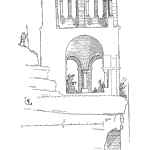
This type of reliability may have different names. A quick search of a few references in my library and I didn’t find ongoing reliability testing, ORT, in any of them.
It does exist and you may have heard of it before or even use some form of ORT. Or not.
Ongoing reliability testing or ORT is the continued evaluation of your product typically using samples drawn from production. The testing evaluates the reliability performance of recent production units.
The focus is on finding anomalies or changes that may occur in the design, supply chain, or production process that significantly changes field reliability performance. [Read more…]













